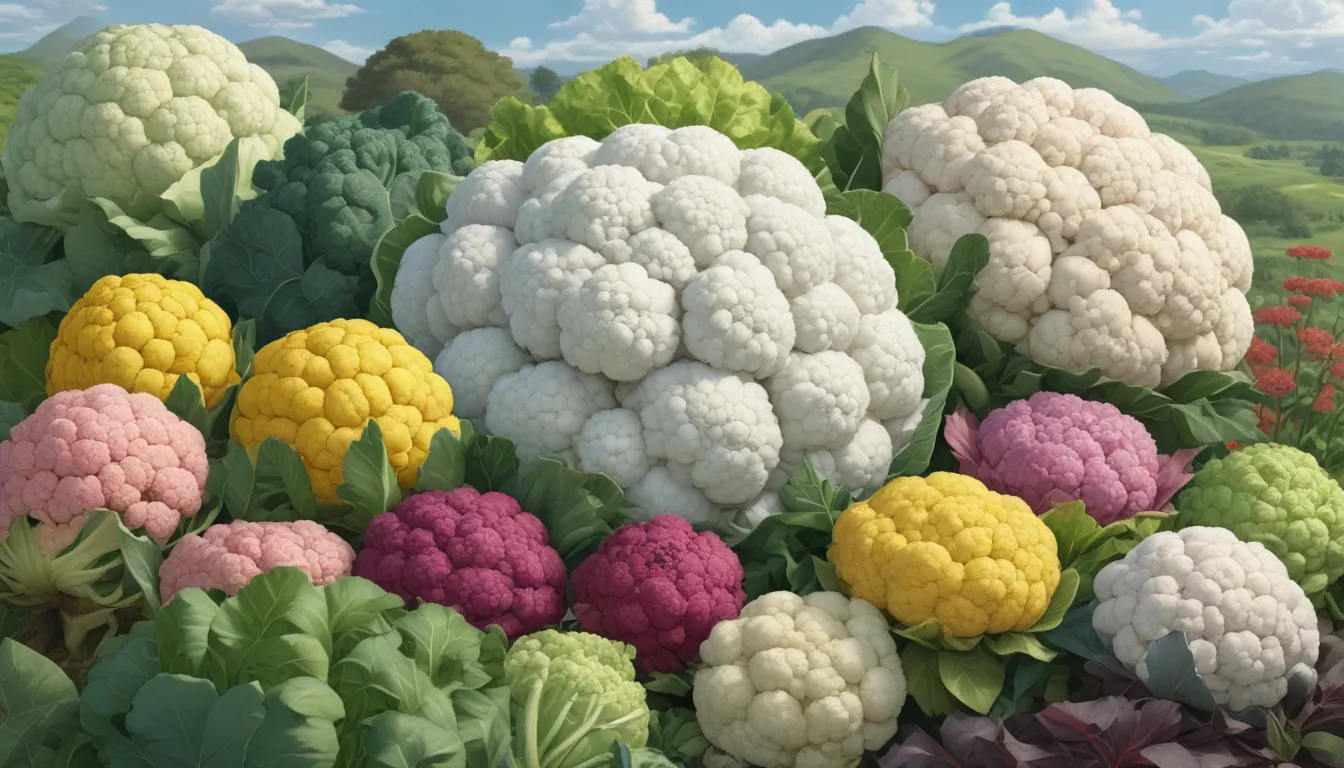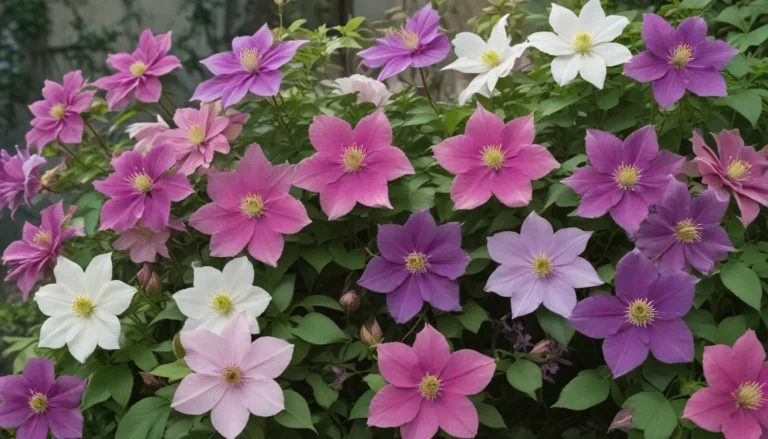13 Types of Cauliflower for Your Home Garden

Growing cauliflower comes with various challenges, but with the right care and attention, you can expect success with this cool-weather crop. Cauliflower has a rich history, with origins tracing back to fifteenth-century Cyprus. This vegetable has evolved over time, adapting to different climates and producing a wide range of varieties with unique characteristics.
Different cauliflower varieties offer distinct flavors, colors, and nutrient contents. Today’s hybrids and cultivars are the result of cross-breeding and genetic mutations, resulting in improved qualities such as smoother heads, vibrant colors, and disease resistance. When choosing cauliflower varieties for your home garden, look for these desirable traits.
Cauliflower thrives in USDA Hardiness Zones 2 to 11 and is rich in antioxidants, vitamin C, and fiber. Here are 13 exceptional cauliflower varieties that you’ll love to grow in your garden:
1. Attribute Hybrid
- Early variety maturing in 60 to 70 days
- Smooth, bright white heads with a nutty/buttery flavor
- Resistant to light frost and heat
- Requires minimal blanching
- Available from Burpee in seeds or plant sets
2. Cheddar Hybrid
- Early orange variety maturing in 60 to 70 days
- Uniform 4- to 7-inch heads containing beta-carotene
- Mild and sweet flavor
- No blanching required
- Available from True Leaf Market
3. Depurple Hybrid
- Unique purple florets on white stems
- Matures in 80 to 100 days
- Dense heads with antioxidant anthocyanins
- No blanching required
- Available from Burpee in seeds or plant sets
4. Early White Hybrid
- Robust and fast-growing option maturing in 52 days
- Pure white heads reaching up to 9 inches in diameter
- Cold-tolerant and firm with a mild flavor
- Available from Burpee in seed packages
5. Fioretto 60
- Early sprouting variety maturing in 33 to 60 days
- Loose white florets on light green stems
- Nutty flavor and crunchy texture
- Pest-resistant and blanching recommended
- Available from Burpee in seeds or plant sets
6. Fioretto 85
- Similar to Fioretto 60 but matures in 45 to 85 days
- Nutty flavor and crunchy texture
- Pest-resistant and blanching recommended
- Available from Burpee in seed packages
7. Flame Star Hybrid
- Early orange variety maturing in 55 to 60 days
- Firm heads with sweet flavor
- Compact size suitable for containers
- No blanching required
- Available from Burpee in seeds or plant sets
8. Graffiti Hybrid
- Bright purple heads maturing in 70 to 80 days
- Antioxidant anthocyanins and mild sweet flavor
- Tolerance to humidity and disease
- No blanching required
- Available from True Leaf Market
9. Self-Blanching Snowball
- Heirloom white variety maturing in 65 to 75 days
- Leaves protect developing heads
- Mild flavor and traditional European origin
- Available from Burpee in seed packages
10. Sicilian Violet
- Deep purple heads maturing in 80 days
- Rich in antioxidant anthocyanins
- Tolerant of light frost and insect-resistant
- Sweet flavor with no blanching required
- Available from Ohio Heirloom Seeds
11. Snowball Y Improved
- Smooth and compact white heads maturing in 70 to 80 days
- Mild flavor with self-blanching leaves
- Suitable for small plots
- Available from Eden Brothers
12. Veronica Romanesco Hybrid
- Cross between cauliflower and broccoli maturing in 85 days
- Unusually pointy lime green whorls of curds
- Mildly sweet flavor and resistance to fungal disease and heat
- No blanching required
- Available from True Leaf Market
13. White Corona Hybrid
- Fast-growing white variety maturing in 30 to 33 days
- Compact heads reaching 3 to 5 inches across
- Suitable for containers and small plots
- Blanching may be required
- Available from Burpee in seed packages
Cauliflower Varieties for Every Preference
Whether you prefer traditional white cauliflower or vibrant purple varieties, there is a cauliflower type to suit your taste and gardening needs. From early maturing hybrids to unique heirloom varieties, you can choose from a wide range of cauliflower options for your home garden.
Growing Tips for Cauliflower
While you’re waiting for your cauliflower seeds or plants to arrive, it’s essential to prepare your garden for successful cauliflower cultivation. Here are some tips to help you grow healthy cauliflower:
-
Cool Temperatures: Cauliflower thrives in cool temperatures, so it’s best to plant it in early spring or late summer to avoid extreme heat.
-
Moisture: Cauliflower plants require consistent moisture to develop healthy heads. Make sure to water regularly and provide adequate drainage to prevent waterlogging.
-
Air Circulation: Good air circulation is essential to prevent diseases in cauliflower plants. Plant them in a location with sufficient airflow to reduce the risk of fungal infections.
-
Soil Quality: Cauliflower plants prefer well-draining, fertile soil enriched with organic matter. Conduct a soil test to ensure the pH level is suitable for cauliflower cultivation.
-
Pest Control: Keep an eye out for common cauliflower pests such as aphids, cabbage worms, and slugs. Use natural pest control methods or organic pesticides to protect your plants.
Delicious Cauliflower Recipes
Once your cauliflower harvest is ready, it’s time to enjoy the fruits of your labor with delicious cauliflower recipes. From vegetarian cauliflower enchiladas to grain-free cauliflower “fried rice,” there are endless culinary possibilities with this versatile vegetable.
Explore More Cool-Weather Crops
If you’re interested in expanding your cool-weather crop selection, consider growing broccoli, kohlrabi, and kale alongside your cauliflower. These nutrient-rich vegetables thrive in similar growing conditions and can complement your cauliflower harvest.
I hope this expanded article provides you with valuable insights into the world of cauliflower varieties and cultivation. Whether you’re a seasoned gardener or a beginner, experimenting with different cauliflower types can add excitement and diversity to your vegetable garden. Happy gardening!





